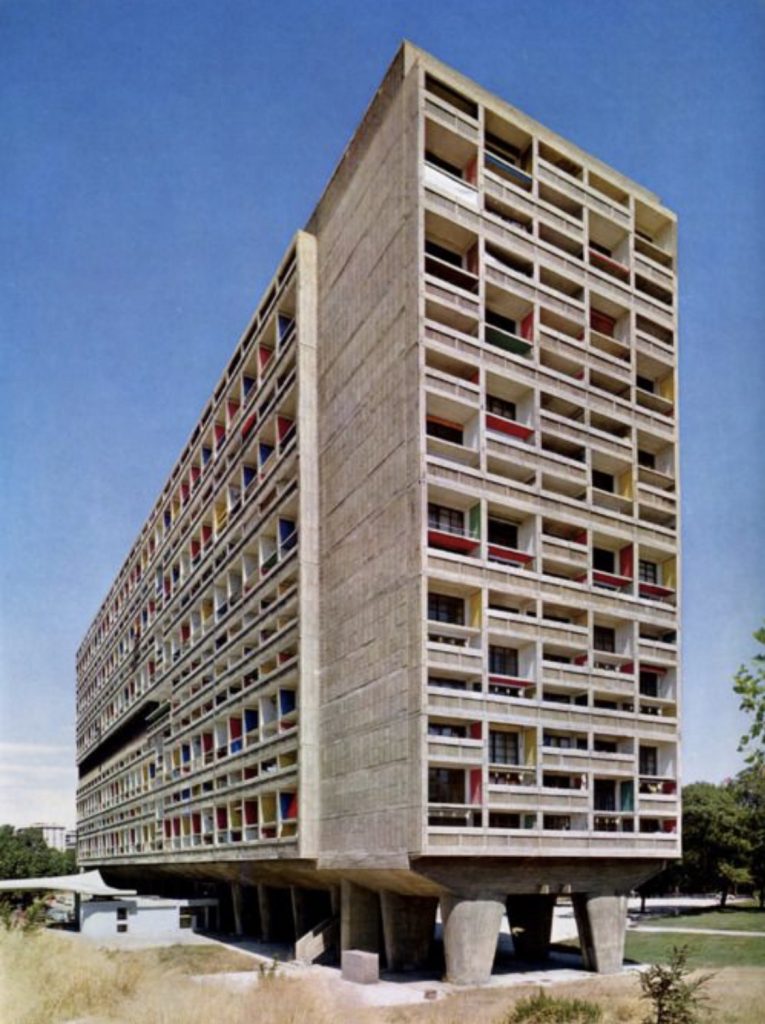Le Corbusier: Master of Modern Architecture born October 6, 1887
When it comes to modern urban design and planning, perhaps no name figures more prominently than that of Le Corbusier. A Swiss born French architect, he was one of the founders of modern architecture. The International Style, primarily the vernacular of Le Corbusier, was born of the progress of building materials. Compressed concrete, reinforced concrete, and greater tensile strength of steel, created the ability for the stability and support of a structure to be subordinated to the concerns of utility and esthetics. The design of building interiors, thus, was open to much more flexibility as the interior walls of a structure were no longer necessary to bear the load. Interior space could be configured to the architect’s design wishes.
concrete, reinforced concrete, and greater tensile strength of steel, created the ability for the stability and support of a structure to be subordinated to the concerns of utility and esthetics. The design of building interiors, thus, was open to much more flexibility as the interior walls of a structure were no longer necessary to bear the load. Interior space could be configured to the architect’s design wishes.
Famously, Le Corbusier is responsible for the conceptual design of the United Nations complex in New York City, along with the Brazilian architect Oscar Niemeyer. However, the influence of Corbusier can be felt throughout our city, and indeed the world.
Most distinctly in Manhattan is the design for Washington Square Village (1958). The complex is based on his concept of the “Radiant City,” and the two slabs are inspired by his Unite d’Habitation complex in Marseilles, France (1948).

“Radiant City” represented a utopian dream to reunite man within a well-ordered environment: a complex of high rise housing units surrounding abundant green spaces. His most famous saying was “Architecture or Revolution.” This philosophy stemmed from his belief that an efficient, industrialized architecture was the only way to avoid class-based revolution. His design philosophy was inspired by mathematical concepts used by Leonardo da Vinci, such as the golden ratio and the Fibonacci series, which he used as the basis for his architectural proportions.

Jane Jacobs was perhaps his most vociferous critic. “Le Corbusier’s Utopia was a condition of what he called maximum liberty, by which he seems to have meant not liberty to do anything much, but liberty from ordinary responsibility… Nobody was going to have to struggle with plans of his own.” In her seminal book The Death and Life of Great American Cities, Jacobs railed against the concepts of mid-20th century architecture. In her eyes, the “rational” planning concepts proposed by Corbusier were the antithesis of a healthy urban community. Her vision of a healthy neighborhood includes the natural ebb and flow of work life and family life integrating within the neighborhood. Keeping uses of space strictly separate, with offices, factories, shops and residences segregated into their own areas by strict zoning laws would result in streets being deserted for long stretches of time and therefore dangerous. The increased danger would ultimately discourage pedestrian use of streets, thus the “death of the great American city.”
While Corbusier has both his champions and detractors, there is no denying his impact on urban design and planning throughout the world.
